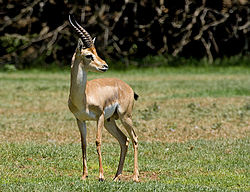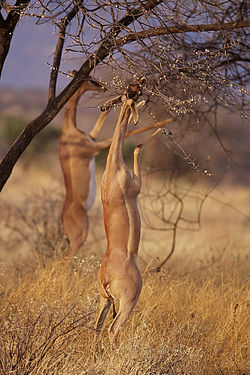| Antilopinae | |
|---|---|
 | |
| Mature male Indian blackbuck (Antilope cervicapra) | |
| Scientific classification | |
| Kingdom: | Animalia |
| Phylum: | Chordata |
| Class: | Mammalia |
| Order: | Artiodactyla |
| Family: | Bovidae |
| Subfamily: | Antilopinae Gray, 1821 |
| Genera | |
See text | |
Antilopinae is a subfamily of even-toed ungulates in the family Bovidae. The members of tribe Antilopini are often referred to as true antelopes, and include the gazelles, blackbucks, springboks, gerenuks, dibatags, and Central Asian gazelles. True antelopes occur in much of Africa and Asia, with the highest concentration of species occurring in East Africa in Sudan, Eritrea, Ethiopia, Somalia, Kenya, and Tanzania. The saiga (tribe Saigini) inhabits Central and Western Asia, mostly in regions from the Tibetan Plateau and north of the Indian subcontinent. The dwarf antelope species of tribe Neotragini live entirely in sub-Saharan Africa.




